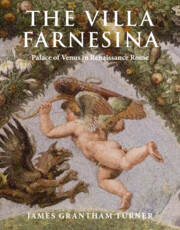Book contents
- The Villa Farnesina
- The Villa Farnesina
- Copyright page
- Contents
- Acknowledgements
- Abbreviations and Frequently Cited Works
- Introduction
- 1 ‘Antique’ Imagination and the Creation of the Villa-Palazzo
- 2 The Stanza del Fregio and Peruzzi’s First Architectural Wall-Painting
- 3 The Lost Façade-Paintings
- 4 1512 Overtures
- 5 The Second Phase, 1518–1519
- Notes
- Photograph Credits
- Index
1 - ‘Antique’ Imagination and the Creation of the Villa-Palazzo
Origins and Precursors
Published online by Cambridge University Press: 06 October 2022
- The Villa Farnesina
- The Villa Farnesina
- Copyright page
- Contents
- Acknowledgements
- Abbreviations and Frequently Cited Works
- Introduction
- 1 ‘Antique’ Imagination and the Creation of the Villa-Palazzo
- 2 The Stanza del Fregio and Peruzzi’s First Architectural Wall-Painting
- 3 The Lost Façade-Paintings
- 4 1512 Overtures
- 5 The Second Phase, 1518–1519
- Notes
- Photograph Credits
- Index
Summary
Hints for the genesis of the Farnesina may be found in ancient and Renaissance literature, in earlier projects commissioned by Agostino Chigi and his family, and in Peruzzi’s own development. This opening chapter traces the influences, ancient and modern, that converged to form the precocious architect-painter, within the larger context of Chigi patronage (in Siena and Rome) and the cultural ambitions that made Agostino distinctive. As Nicholas Adams remarks, ‘the villa is a compact encyclopedia of antique references and motifs on the theme of pleasure and fame’, Peruzzi being ‘an artist and architect of great erudition, without equal as a draughtsman and noted for his extraordinary studies of antique buildings’. Section 1 accordingly starts by characterising Peruzzi’s relation to Antiquity, showing how he augmented those studies with the precepts of Vitruvius and ancient accounts of the ‘voluptuous’ villa, notably those by the poet Statius. Elements from many sources combine to create a unique synthesis of villa, palace, office and theatre, already announced in the stage set of the entry façade (Fig. 1.1, an invaluable sixteenth-century architect’s drawing, now in New York).
- Type
- Chapter
- Information
- The Villa FarnesinaPalace of Venus in Renaissance Rome, pp. 22 - 94Publisher: Cambridge University PressPrint publication year: 2022



